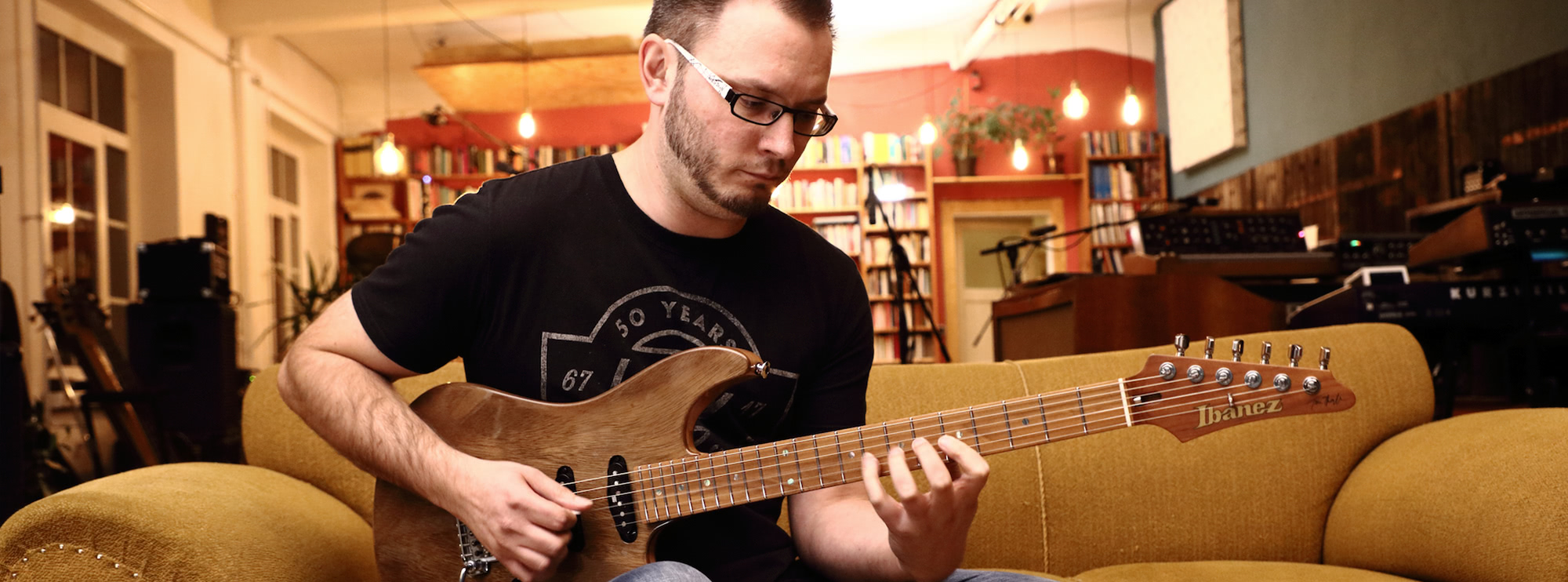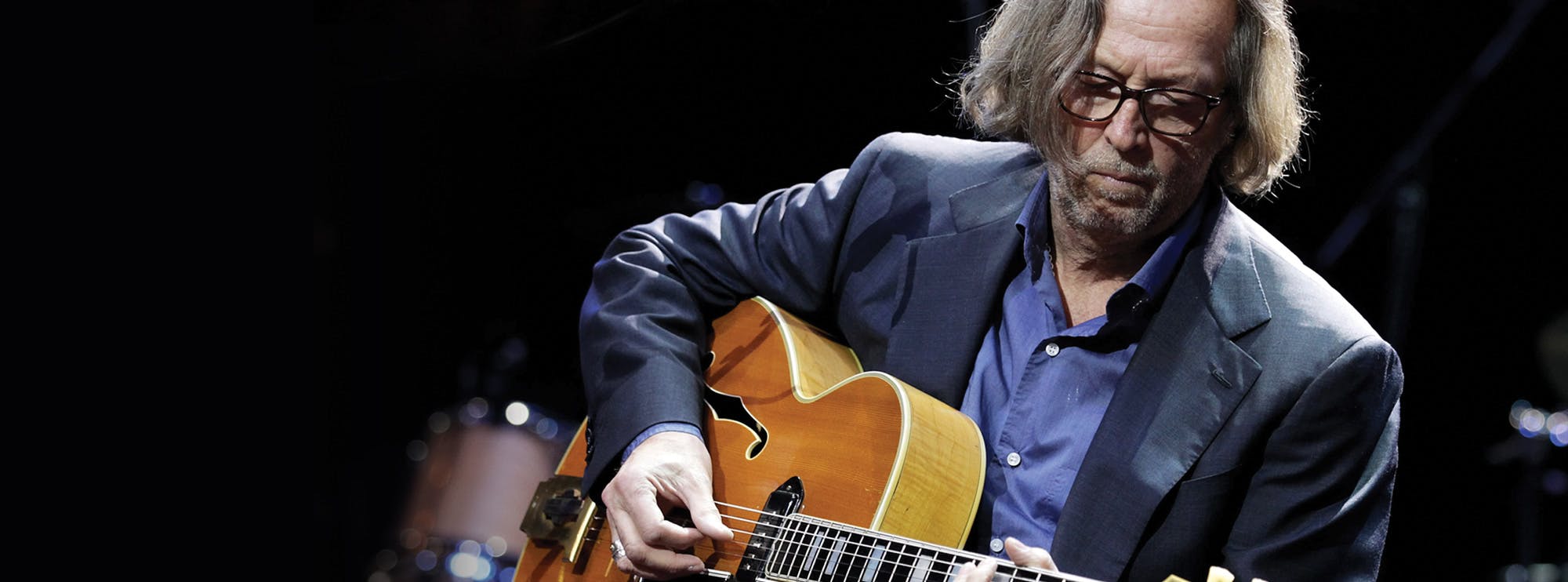In March 1976, Paul Kossoff died from heroin related heart problems aged 26, and here we are nearly 40 years later taking a look at his guitar playing style and sound. It's a testament not only to him as a player, but a whole era of playing that gets missed today by young hungry guitar players that consider speed playing, coupled with hyper technique, are what learning the guitar is about.
Kossoff was the perfect match for Paul Rodgers' soulful Blues Rock voice in the band Free. That's the essence of what Paul Kossoff delivered on the guitar, soulful Blues Rock.
Michael Casswell
What Kossoff had, as well as many other great players from that '68-'75 time frame such as Peter Green, Eric Clapton, Jimi Hendrix, Rory Gallagher and Jeff Beck, to name a few, is a touch, tone and feel that made every note mean something. Each player had a recognisable personality delivered in the way they would phrase, bend and vib a note, and Paul Kossoff was up there as one of the best. It's a way of thinking and approach that I absorbed as a young player. While all my friends were listening to Punk and New Wave, I went back and listened to the subtle differences for instance in how Clapton and Peter Green would apply vibrato compared to Paul Kossoff. These sort of iconic players were a fantastic grounding for me as a young guitarist, because it was the perfect vehicle to build more technical styles upon. So many young players in today's 'YouTube' world want to run before they can walk, the consequence of which is huge gaps in their playing that should be filled with feel, soul, tone, expression, phrasing and rhythm.
Kossoff was the perfect match for Paul Rodgers' soulful Blues Rock voice in the band Free. That's the essence of what Paul Kossoff delivered on the guitar, soulful Blues Rock. So although there is nothing particularly hard technique wise in our style file, what is extremely hard to emulate is the way Paul Kossoff would play a few notes and just sound fantastic. Basically it was really great Blues playing, put into the format of great songwriting, delivered by four young guys who called themselves 'Free,' which worked and struck a chord with the masses. Each member of Free brought something to the table and to this day Paul Rodgers is a singer's singer.
Apart from great Blues style guitar soloing, Paul Kossoff often voiced simple chords in ways which made the drum, bass, guitar format sound bigger and more interesting than usual. Inverting chords, or using triads over an open string pedalling the tonic key, were tricks that Kossoff was one of the first to use, and when you listen back to those old Free albums, it was definitely part of the band's trademark sound. Kossoff made the guitar parts sound like there was more going on than there actually was. All the members of Free dabbled in piano, so often there would be simple piano parts added to the studio recordings. I have tried to capture the elements of both Free as a band, and Kossoff as a player in our backing track. My Paul Kossoff style guitar solo is improvised using Blues guitar licks that Paul Kossoff and other players of the 70’s Rock era employed, but also using Paul's trademark quick urgent finger vibrato, which hopefully makes the whole thing more specific to his sound. As a note about 'that' vibrato, it seems to me that Paul Kossoff dramatically changed his finger vibrato post Free. When you listen to his playing on 'Back Street Crawler' it is much slower and a little wider than the vibrato he was using in his Free years. Was it a work in progress? Was it the chemicals in his system changing his approach? We will never know, but I associate the Free years vibrato as the sound we would recognise as Paul Kossoff. Would you also agree with me that Angus Young from AC/DC has huge elements of Kossoff's vibrato technique in his playing?
As far as tone goes, well we know it was all about his '59 Les Paul and point to point wired Marshalls from the day. I used one of my Les Pauls and a more modern Marshall pushed a little bit at the front end with an old Boss CS2 compressor. After Free split up, Paul Kossoff employed his Strats more, and even a few pedals of the day to push his amps at the front end. But due to his sad death, we will all probably associate the sound he made with a Les Paul more than a Strat, which is why I chose one as the guitar to do this style analysis with.
If you are reaching for the Kossoff sound and a vintage Les Paul/Marshall set-up is out of you price range (and who can afford that sort of gear these days?!) don't despair. For surprisingly little money you can pick up a really good guitar in the 'sort of' Les Paul mode, like the Vintage V100 for silly money, which the GI team still rate as one of the finest value for money guitars on the market today, and if you can't find one of those there are plenty of Epiphone Les Pauls around. Ideally, you are going to want a valve/tube amp to get the sound and in a perfect world that would mean a Marshall, but most good valve amps driven hard will get you somewhere close.
I hope you like the backing track. You need to be on top of your E minor pentatonics for the A section and be able to mix up your A minor and A major pentatonic shapes for the B section. But if you really want to sound like Paul Kossoff, think about that vibrato, and those smaller inverted power chords he employed. Oh, and don't forget tone, feel, soul, phrasing, expression, string bending, dynamics, guitar parts, songwriting, rhythm playing...... need I go on!
About The Tutor
Tutor Profile
Michael Casswell
It is with great sadness that we post the news of Michael Casswell's tragic death in a swimming accident while on holiday in Spain. All of us at Licklibrary are shocked and saddened by MIke's passing, and our deepest sympathies go out to his family at this difficult time. Michael...



